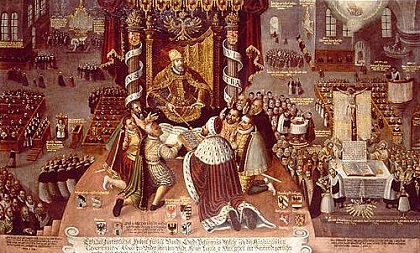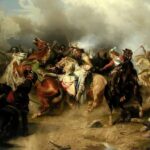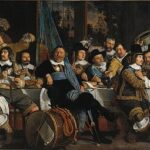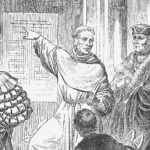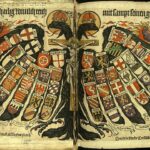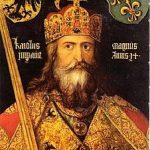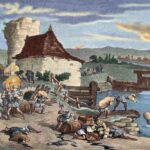Imagine a country where the ruler’s religion dictated your own. No choice. No freedom of belief. Just the heavy hand of authority deciding how – and to whom – you should pray. Welcome to 16th-century Germany, a land torn by one of Europe’s fiercest struggles: the battle between Catholicism and Protestantism. And at the heart of this storm stood one of the most critical treaties in German – and indeed European – history: the Peace of Augsburg.
Signed in 1555, this landmark agreement was meant to cool the burning tensions between Protestant and Catholic states within the Holy Roman Empire. It was not a perfect solution – far from it – but it represented one of the earliest formal recognitions of religious plurality in Europe. This article dives into the cultural and political forces behind the Peace of Augsburg, the deal’s main terms, its legacy, and why its echoes are still felt in Germany today.
Whether you’re a curious teen, a university student, or simply someone fascinated by the crossroads of faith and power, read on. This story is as much about ideas as it is about emperors and bishops – and it begins with a monk nailing some theses to a church door.
What Was the Peace of Augsburg?
The Peace of Augsburg was a treaty signed on September 25, 1555, between the Holy Roman Emperor Charles V and the Lutheran princes of the empire. It marked the end of decades of religious warfare triggered by the Protestant Reformation – a movement started in 1517 by Martin Luther, who challenged the authority of the Catholic Church.
At its core, the Peace of Augsburg granted legal recognition to Lutheranism alongside Roman Catholicism within the empire. The famous principle of cuius regio, eius religio – “whose realm, his religion” – meant that each prince or ruling authority could choose either Catholicism or Lutheranism for their territory, and their subjects would be expected to follow suit.
Why does this matter? Because for the first time, religious diversity became a legal reality within a major European polity. Germany wasn’t becoming tolerant, exactly, but it was learning to live – uneasily – with differences.
Historical Context: The Road to Augsburg
The Protestant Reformation and Chaos in the Empire
In 1517, Martin Luther’s 95 Theses sparked an intellectual and theological revolution that quickly evolved into political rebellion. Princes across the empire – particularly in northern Germany – saw in Luther’s teachings not just spiritual truth but an opportunity to challenge imperial authority and the Catholic hierarchy.
Within a few decades, the Holy Roman Empire fractured into Catholic and Protestant states, each aligning based on a mix of belief and political expedience. As the empire spiraled into civil conflict, Emperor Charles V, a staunch Catholic, tried repeatedly to restore religious unity – sometimes by force.
By the 1540s, the Protestant princes had formed the Schmalkaldic League, a defensive alliance. War broke out. Though Charles won key battles, he could not hold Protestant territories for long. It became clear that military victory would not bring religious unity. Something more flexible – something diplomatic – was needed.
Why Augsburg?
The city of Augsburg, in Bavaria, was already an important center for imperial politics. It had hosted multiple Diets (imperial assemblies) before, and in 1555 it was chosen again to serve as neutral ground for negotiations. The stakes? Nothing less than the future of religion in Germany.
Key Terms and Outcomes of the Peace of Augsburg
The Principle of Cuius Regio, Eius Religio
This Latin phrase, central to the treaty, gave each prince or city the right to determine the religion of their own territory. Subjects were expected to follow their ruler’s religion, or else emigrate. There was no room for religious minorities to remain within a territory under a different faith.
This marked a revolutionary departure from the previously uniform Catholicism of the empire. In practical terms, it led to a patchwork religious map of Germany: Lutheran Saxony here, Catholic Bavaria there. Religion became a matter of state policy, not individual conscience.
Legal Recognition of Lutheranism
The Peace recognized Lutheranism – but not other Protestant movements like Calvinism or Anabaptism. These groups remained officially banned and were subject to persecution. Thus, the agreement was a compromise, not a blanket endorsement of religious freedom.
Ecclesiastical Reservation (Reservatum Ecclesiasticum)
A lesser-known but significant clause stated that if a Catholic bishop or prince converted to Lutheranism, they must resign their position and land. This was designed to protect Catholic holdings, though in practice it led to tensions that would explode later.
Cultural and Historical Impacts
The Short-Lived Peace
Though the Peace of Augsburg temporarily halted religious war, its limitations soon became evident. Because it excluded Calvinism – an increasingly popular movement in parts of the empire – it left many dissatisfied. In the coming decades, Calvinist regions began asserting themselves, reigniting conflict.
This set the stage for the Thirty Years’ War (1618-1648), one of the most devastating conflicts in European history. When peace finally came again, it was through the Peace of Westphalia, which built upon and revised many of the principles of Augsburg.
Shaping German Identity
Despite its flaws, the Peace of Augsburg laid the groundwork for a distinctly German approach to religious coexistence – pragmatic, regional, and legalistic. The idea that states could define their own religious policies within a larger federal structure remains a thread in German governance to this day.
The treaty also emphasized the fragmentation of German lands, reinforcing the idea of Germany as a mosaic of semi-autonomous regions – a theme that persisted until unification in the 19th century.
For more on how Germany’s political structure evolved, explore our article on The Holy Roman Empire.
Religious Geography: Then and Now
Take a look at modern Germany’s religious map. The north and east are still predominantly Protestant (Evangelical), while the south and west lean Catholic. This geographic legacy stems directly from the 1555 agreement. The decisions of long-dead princes echo in church bells today.
You can explore how this continues to influence local traditions and festivals – see our piece on German Christmas Traditions to see how religion shapes regional customs.
Art and Literature
The Peace of Augsburg and the Reformation inspired generations of writers, painters, and thinkers. From Protestant hymnody to Catholic counter-reformation art, the cultural blossoming of the 16th century reflects both conflict and creativity. This moment helped birth modern German thought, including ideas of conscience, identity, and the role of the state.
Lessons in Tolerance (and Its Limits)
While Augsburg did not create religious freedom in the modern sense, it did force political actors to negotiate differences rather than erase them. That’s a powerful lesson even today, as Germany continues to grapple with issues of pluralism, immigration, and integration.
The Peace of Augsburg stands as one of the boldest and most consequential attempts to resolve religious conflict through political compromise. Though its solutions were imperfect – and ultimately temporary – it laid the groundwork for a more pluralistic Europe and shaped the cultural and political landscape of Germany for centuries to come.
It is a story not just of treaties and titles, but of how people live with difference. The choices made in Augsburg still ripple through German traditions, politics, and identity today.
Curious to learn more about the broader historical forces that shaped Germany? Start with our in-depth look at the Protestant Reformation or dive into our German History section for a full journey through the centuries.
Related articles:
Martin Luther and the 95 Theses – Discover how Luther’s 1517 protest against indulgences sparked the Protestant Reformation and forever altered the religious landscape of Germany and Europe.
The German Peasants’ War (1524–1525) – A major uprising of peasants and lower classes inspired by Reformation ideals, this war revealed deep social tensions in early modern Germany.
The Thirty Years’ War and Its Impact on Germany – This devastating conflict reshaped Central Europe, leading to massive depopulation, destruction, and long-term political fragmentation in the German lands.
The Peace of Westphalia (1648) – The treaty that ended the Thirty Years’ War established new political boundaries and is considered a foundation of modern international diplomacy.
Rise of Brandenburg-Prussia – Follow the emergence of Brandenburg-Prussia as a rising power in northern Germany, laying the groundwork for future German unification.
The Enlightenment in the German States – Learn how German philosophers, writers, and reformers contributed to the broader European Enlightenment with ideas on reason, science, and governance.
